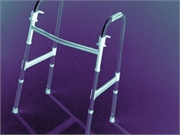May 2020 Briefing – Neurology
Here are what the editors at HealthDay consider to be the most important developments in Neurology for May 2020. This roundup includes the latest...
Multiple Sclerosis Tied to Higher Risk for CVD, Cerebrovascular Disease
MS associated with a 3.5-fold higher risk for mortality, 1.5-fold higher risk for cardiovascular mortality
Exposure to Urban Air Pollution May Up Risk of Multiple Sclerosis
Adjusted risk 29 percent higher among those residing in more urbanized areas
Spirituality May Have Protective Effect on QOL for Stroke Survivors
Spirituality may moderate link between care partner depressive symptoms and survivor psychological QOL
9.5 Percent Uninsured in U.S. From January Through June 2019
Overall, 13.7 percent of adults aged 18 to 64, 4.4 percent of children aged 0 to 17 were uninsured
Links Found Between Leaders of Medical Associations, Industry
Most leaders have ties to industry; considerable variation seen among 10 medical associations in U.S.
Multiple Sclerosis Tied to Higher Risk for CVD, Cerebrovascular Disease
MS associated with a 3.5-fold higher risk for mortality, 1.5-fold higher risk for cardiovascular mortality
Tooth Loss More Prevalent in Adults With Chronic Disease
Prevalence of edentulism, severe tooth loss ≥50 percent higher for adults with RA, asthma, diabetes
Only One in Four U.S. Hospitals With ICUs Have Tele-ICU Services
Wide regional variation seen for availability of telehealth outpatient visits, tele-ICU services
CBT Offers Some Benefits in Adults With Dissociative Seizures
CBT plus standardized medical care does not reduce monthly seizure frequency versus standardized medical care alone



















